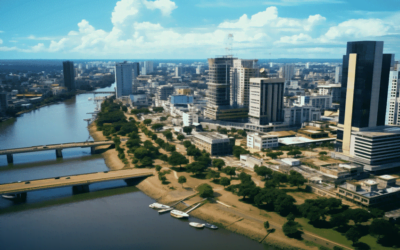Hey there, fellow drone enthusiasts and curious folks! If you’re here, it’s likely because you’ve been pondering the ins and outs of Greece’s drone laws. Don’t worry; I’ve been there, and I understand the quest for clarity when it comes to navigating drone regulations in this beautiful country.
You see, I’ve done my homework—the kind of research that involves sifting through official documents, reaching out to the authorities, and chatting with experienced drone pilots who’ve explored the Greek skies.
I’ve delved deep into the Greece Drone Laws to bring you the most up-to-date and reliable information. So, if you’re wondering what you can and can’t do with your drone in Greece, you’re in the right place.
Stick around, because, in this article, I’m going to unravel the intricacies of Greece’s drone regulations, ensuring that you’re well-informed and ready to take to the skies.
Whether you’re planning a holiday adventure with your drone or a local pilot, I’ve got the answers you need. So, read on, and let’s clear the air on Greece’s drone laws. Your drone adventures in this magnificent country await!
- Greece Registration and Categorization
- Age and Operator Requirements in Greece
- No-fly Zones and Restricted Areas in Greece
- Greece Altitude Restrictions
- Greece Visual Line of Sight (VLOS)
- Flight in Controlled Airspace in Greece
- Greece Insurance Requirements
- Greece Privacy and Data Protection
- Recent Changes and Updates in Greece
- Final Thoughts on Greece Drone Laws
- Frequently Asked Questions About Greece Drone Laws
Greece Registration and Categorization

So, let’s start by unpacking the registration and categorization aspects of Greece’s drone laws. It might sound a bit bureaucratic, but trust me, understanding these rules is essential for a smooth and enjoyable drone experience in this picturesque land.
Explanation of drone registration requirements in Greece
If you’re planning to fly a drone in Greece, you’ll need to get familiar with the registration process. It’s not as complicated as it might sound, but it’s essential to get it right.
The authorities require you to register your drone if it weighs more than 250 grams. Think of it as a way to keep track of who’s flying what in the Greek skies. It’s all about accountability and ensuring safety for everyone sharing the airspace.
Categories of drones based on weight
Now, let’s break down the categories of drones based on their weight. It’s a bit like choosing the right club for your golf swing—you need to know which category your drone falls into.
Microdrones (under 250 grams)
Microdrones are the featherweights of the drone world, coming in at less than 250 grams. These little guys are perfect for some casual aerial shots, and the best part is, you don’t need to register them with the authorities in Greece. They’re light, nimble, and often used for fun rather than professional photography.
Small drones (250 grams to a specific weight limit)
Small drones fall into the weight range between 250 grams and a specific limit. These mid-sized drones can capture some impressive aerial footage and are often favored by hobbyists and aspiring photographers.
However, the rules change here; registration becomes necessary. So, if your drone falls in this weight category, be sure to complete the registration process.
Larger drones (above the specified weight limit)
Now, we come to the big leagues—larger drones that weigh more than the specified limit. These drones are usually the workhorses for professional photographers and videographers.
When you’re operating one of these, it’s crucial to have all your paperwork in order. Registration, insurance, and compliance with airspace restrictions become essential.
Registration process and requirements
Let’s dive into the nitty-gritty of the registration process and the requirements you’ll need to meet when flying your drone in Greece.
Personal information
When registering your drone, you’ll typically be required to provide some personal information. This helps the authorities keep tabs on who’s behind the controls and ensures accountability. While it may seem like a bit of paperwork, it’s all about maintaining order and safety in the skies.
Drone specifications
Next up, you’ll need to provide details about your drone. This includes information like its make and model, serial number, and other specifications. The goal here is to ensure that your drone complies with the regulations and doesn’t pose any safety risks.
Remember, adhering to these registration and categorization rules not only keeps you on the right side of the law but also contributes to the overall safety and enjoyment of drone flights in Greece.
So, whether you’re flying a micro drone, a mid-sized beauty, or a heavyweight champion, understanding these rules is your ticket to a trouble-free drone adventure.
Also Read: Ghana Drone Regulations 2024
Age and Operator Requirements in Greece

Now, let’s talk about the age and operator requirements set by Greece’s drone laws. If you’re dreaming of soaring through the Greek skies with your drone, these are the details you’ll want to keep in mind.
Minimum age for drone operators
So, what’s the deal with the minimum age requirement for drone operators in Greece? Well, it’s pretty straightforward.
To be the captain of your drone, you need to be at least 16 years old. That’s right, sweet sixteen. It’s a reasonable age requirement, ensuring that operators have a certain level of maturity and responsibility.
Legal responsibilities of drone operators
Flying a drone in Greece comes with some legal responsibilities, much like any other activity that impacts public safety.
As an operator, it’s essential to be aware of your responsibilities. You’re responsible for ensuring that your drone is in good working condition, respecting the airspace rules, and, of course, keeping a close eye on your surroundings to avoid any potential mishaps.
Consequences of violating operator requirements
Now, let’s discuss the consequences of veering off the path of responsible drone operation. In Greece, as in many places, not following the rules can lead to some unwanted issues.
If you fail to meet the operator requirements, you might face fines or legal repercussions. The severity of the consequences can vary based on the nature of the violation and its impact on safety.
Being aware of the minimum age, your legal responsibilities, and the potential consequences of violating operator requirements is essential for a safe and enjoyable drone experience in Greece.
It’s not about being overly strict; it’s about ensuring that everyone can share the skies while minimizing risks and conflicts. So, as you prepare to take flight, keep these factors in mind, and you’ll be on your way to drone adventures filled with stunning views and wonderful memories.
Also Read: Germany Drone Regulations 2024
No-fly Zones and Restricted Areas in Greece

In any discussion about drone laws, no-fly zones, and restricted areas, these are topics that demand our attention. Greece, with its breathtaking landscapes and bustling cities, is no exception. So, let’s dive into the specifics of these areas and why it’s crucial to respect the restrictions.
Explanation of restricted areas in Greece
First off, what exactly do we mean by restricted areas in Greece? These are regions where drone operations are either entirely prohibited or subject to strict regulations.
The purpose is to safeguard sensitive locations, public safety, and the privacy of individuals. When you’re flying in Greece, it’s crucial to be aware of where these areas are located to ensure a smooth and trouble-free drone experience.
Specific no-fly zones (airports, military installations, etc.)
When we talk about no-fly zones, certain places immediately come to mind – airports and military installations.
These areas are off-limits for drones. It’s a no-brainer, really. Flying a drone near an airport or a military base poses a significant safety risk, and it’s a legal red flag. So, if you’re anywhere near one of these zones, leave your drone grounded.
The importance of respecting these restrictions
The significance of respecting these restrictions cannot be stressed enough. Ignoring no-fly zones and restricted areas can lead to serious consequences, including fines, legal troubles, and, in the worst-case scenario, accidents.
We all want to enjoy our drones safely and responsibly, right? So, by adhering to these rules, we’re not only following the law, but we’re also contributing to the overall safety of our skies.
It’s simple: understanding and respecting these restrictions is not just a legal obligation but a moral one as well. By doing so, we can all share the Greek skies responsibly and capture some incredible aerial shots without putting anyone at risk.
Also Read: Georgia Drone Regulations 2024
Greece Altitude Restrictions

Now, let’s explore the skies, figuratively speaking. Altitude restrictions are crucial when it comes to drone laws in Greece. You don’t want to send your drone too close to the sun, do you? So, let’s break down the altitude restrictions, the reasons behind them, and what exceptions and considerations might apply.
Maximum allowable altitude for drone flights
How high can you take your drone in Greece? Well, the maximum allowable altitude for drone flights is typically below 120 meters, which is around 400 feet. That’s high enough to capture some stunning aerial views but low enough to ensure that drones don’t interfere with manned aircraft and other airspace users. It’s a sweet spot that balances adventure and safety.
The rationale behind altitude restrictions
Why the 120-meter limit, you might ask? The answer is simple: safety. Maintaining a limited altitude for drones helps minimize the risk of collisions with other aircraft, including helicopters and planes.
It also ensures that drones stay within the line of sight, promoting responsible and controlled flights. These restrictions are in place to keep the skies safe and enjoyable for everyone.
Exceptions and considerations
Now, there may be some exceptions and considerations when it comes to altitude restrictions. For instance, if you have special permission from the authorities to fly in controlled airspace or need to capture specific footage, you might be allowed to exceed the 120-meter limit. But remember, such exceptions are typically granted for professional purposes and require advanced planning and adherence to safety measures.
So, when you’re taking your drone to new heights in Greece, keep the altitude restrictions in mind.
They’re there not to limit your adventure but to ensure that you and everyone else can explore the skies safely and responsibly. By following these rules, you’ll have a fantastic time capturing the beauty of Greece from above.
Also Read: Gambia Drone Regulations 2024
Greece Visual Line of Sight (VLOS)

Now, let’s talk about the concept of maintaining a visual line of sight (VLOS) when flying your drone in Greece. It might sound like common sense, but there’s more to it than meets the eye. We’ll dive into why VLOS is crucial for drone operations and the safety and regulatory implications that come with it.
The concept of maintaining a visual line of sight
VLOS is a fundamental principle for drone operations, and it’s precisely what it sounds like. When you’re flying your drone, you need to maintain a visual line of sight. In simpler terms, you should always be able to see your drone with your naked eye. This is to ensure that you have full control over your drone, can react to unexpected obstacles, and can avoid other aircraft in the airspace. It’s all about safe and responsible flying.
How VLOS affects drone operations
So, how does VLOS impact your drone adventures in Greece? Well, it means you can’t send your drone on long-distance, out-of-sight missions.
It’s about keeping your drone within your line of sight, which often translates to a few hundred meters, depending on your eyesight. While this might seem limiting, it’s a necessary restriction to ensure safety for all airspace users, including yourself.
Safety and regulatory implications
The importance of VLOS goes beyond just flying etiquette. There are clear safety and regulatory implications associated with it.
Not maintaining VLOS can lead to accidents, near-misses with other aircraft, and potential legal trouble. Greek drone laws prioritize safety, and adhering to VLOS rules is a fundamental aspect of that commitment.
As you venture into the Greek skies with your drone, remember that VLOS is your guiding principle.
It’s not about restricting your adventures; it’s about ensuring that you, your drone, and everyone else sharing the airspace can enjoy it without incidents or accidents. So, keep your eyes on your drone, and let’s explore Greece safely and responsibly.
Also Read: Gabon Drone Regulations 2024
Flight in Controlled Airspace in Greece

Controlled airspace is a whole different ball game when it comes to drone operations in Greece. Flying your drone in such areas is indeed possible, but it requires a bit of extra effort and understanding. Let’s uncover the need for special permissions, the process for obtaining them, and the role of aviation authorities in ensuring safety in these spaces.
The need for special permissions in controlled airspace
Controlled airspace is often found around airports and other sensitive areas, and the rules here are understandably stringent.
If you want to take your drone into this territory, you’ll need special permissions. The reason behind this requirement is to minimize conflicts with manned aircraft and to ensure safe operations for all parties involved. It’s all about keeping the skies safe and sound.
Process for obtaining permissions
Now, let’s talk about the nitty-gritty of obtaining permission for flying in controlled airspace. It’s not as simple as asking for a friend’s drone, but it’s doable.
You’ll typically need to apply to the aviation authorities and provide specific details about your flight plans. This can include information like your intended flight path, time, and purpose. It’s a bit of paperwork, but it’s essential to ensure that your drone operation doesn’t disrupt other flights.
The role of aviation authorities in ensuring safety
Aviation authorities play a crucial role in the whole process of obtaining permissions and maintaining safety in controlled airspace.
They evaluate your application and ensure that your flight plans align with safety standards. They are responsible for coordinating drone flights with other aircraft to minimize risks and maintain a well-organized airspace.
So, as you contemplate venturing into controlled airspace with your drone, keep in mind that it’s not just about paperwork. It’s about ensuring that your flights are safe and coordinated, respecting the rules and regulations that keep the skies safe for everyone. It’s a bit of extra effort, but it’s worth it to capture those breathtaking views without compromising safety.
Also Read: France Drone Regulations 2024
Greece Insurance Requirements

Insurance is often considered a necessary evil, but when it comes to flying your drone in Greece, it’s a necessary good. In this section, we’ll delve into the insurance requirements that drone operators need to be aware of, the types of coverage needed, and the consequences of operating without it.
Liability insurance for drone operators
First things first, let’s talk about liability insurance. As a drone operator in Greece, you’re typically required to have liability insurance.
This coverage is like a safety net. It helps protect you and others in case your drone accidentally causes harm or damage. Think of it as a safety cushion for your aerial adventures.
Weight and purpose-based insurance requirements
The specific insurance requirements can vary depending on the weight and purpose of your drone. Heavier drones and those used for commercial purposes might necessitate more comprehensive coverage. It’s essential to understand the insurance needs associated with your drone to ensure you’re adequately protected.
Consequences of operating without insurance
Now, let’s address the elephant in the room – what happens if you operate your drone without the required insurance? The consequences can range from fines and penalties to legal troubles if your drone causes any harm or damage. Insurance isn’t just a legal obligation; it’s a practical step to protect yourself and others during your drone flights.
So, while insurance might seem like another added cost, it’s a vital part of responsible drone operations in Greece. It’s not just about checking boxes; it’s about ensuring that you’re covered in case of unforeseen accidents. By understanding the insurance requirements and adhering to them, you can have peace of mind while you explore the skies with your drone.
Also Read: Finland Drone Regulations 2024
Greece Privacy and Data Protection

Respecting individuals’ privacy and data protection is paramount when you’re soaring through the skies with your drone.
In this section, we’ll emphasize the importance of these considerations, outline the data protection regulations related to capturing images or videos, and discuss the potential legal consequences of privacy violations.
The importance of respecting individuals’ privacy
Drones can capture breathtaking images and videos, but they can also intrude on the privacy of individuals. It’s crucial to be mindful of this aspect while flying your drone in Greece.
Whether you’re in a residential area, at the beach, or in a bustling city, respecting people’s privacy is non-negotiable. Always maintain a safe distance and be mindful of where you’re pointing your camera.
Data protection regulations when capturing images or videos
When you’re capturing images or videos with your drone, you’re essentially collecting data. This data might include images of individuals, their homes, or other sensitive information.
Under data protection regulations, you must be cautious about how you use, store, and share this data. It’s essential to be aware of and comply with data protection laws to avoid legal issues.
Legal consequences of privacy violations
Privacy violations with your drone can lead to legal consequences. This might involve fines, lawsuits, or damage to your reputation.
In Greece, just like in many other places, privacy is a fundamental right, and authorities take violations seriously. So, it’s not just about flying safely; it’s also about capturing images and videos responsibly, without infringing on the rights of individuals.
In a world where drones can capture stunning visuals, it’s vital to remember that respecting privacy and data protection is an integral part of responsible drone operation.
By doing so, you not only comply with the law but also maintain a positive image and ensure that everyone’s rights are upheld. So, as you explore the beauty of Greece from above, keep these principles in mind and fly with both freedom and responsibility.
Also Read: Fiji Drone Regulations 2024
Recent Changes and Updates in Greece

As drone enthusiasts, we know that the world of regulations is ever-evolving. So, in this final segment, we’ll take a look at any significant changes or updates to drone laws in Greece since 2021 and discuss where to find reliable sources for staying informed about the latest regulations.
Any significant changes or updates to drone laws in Greece since 2021
Since 2021, Greece has continued to keep its drone laws under review. While I don’t have access to real-time information, it’s essential to stay updated on any significant changes or updates that might have occurred since then.
The laws can change to accommodate new technology, safety measures, or emerging challenges. Keeping an eye on these changes ensures that you remain compliant with the most current regulations.
Sources for staying updated on the latest regulations
So, how do you stay in the loop when it comes to the latest drone regulations in Greece? Well, there are several sources to rely on. The Hellenic Civil Aviation Authority (HCAA) is a primary source for drone-related updates.
Additionally, official government websites, aviation forums, and even drone enthusiast communities can provide valuable insights into recent changes. It’s also a good idea to follow relevant news outlets and industry publications for timely updates.
The drone world is a dynamic one, and staying informed about the latest regulations is essential. By keeping an eye on trusted sources and being proactive in your research, you can ensure that you’re always up-to-date and flying your drone in accordance with the most current rules and guidelines. Happy flying!
Also Read: Ethiopia Drone Regulations 2024
Final Thoughts on Greece Drone Laws

As we wrap up our journey through the intricacies of Greece’s drone laws, let’s take a moment to recap the key points we’ve covered.
We’ll emphasize the importance of adhering to these regulations for safe and legal drone operations and offer a friendly nudge to check official sources for the most current information.
key points in Greece’s drone laws
Throughout this discussion, we’ve covered critical aspects of Greece’s drone laws. From registration requirements to privacy considerations, altitude restrictions, and insurance needs, there’s a lot to consider when you take your drone to the Greek skies.
Understanding these key points is the first step to ensuring that your drone flights are not only legal but also safe and responsible.
Emphasis on the importance of adhering to regulations for safe and legal drone operations
The importance of adhering to these regulations cannot be overstated. It’s not about bureaucracy or rules for the sake of rules; it’s about ensuring that the skies are safe for everyone. By following these laws, you not only protect yourself from potential legal troubles but also contribute to the safety and enjoyment of others who share the airspace.
Encourage operators to check official sources for the most current information
As we’ve mentioned, drone laws are subject to change, and staying informed is crucial. We encourage all drone operators in Greece to regularly check official sources for the most current information.
The Hellenic Civil Aviation Authority (HCAA) and government websites are reliable sources to keep tabs on any updates or changes.
So, as you prepare to launch your drone into the dazzling blue skies of Greece, remember that responsible and informed flying is the way to go. Stay safe, respect privacy, and capture stunning views while complying with the rules. Happy flying!
Frequently Asked Questions About Greece Drone Laws
1: Do I need to register my drone in Greece, and how can I do it?
A1: Yes, drone registration is mandatory in Greece. You’ll need to register your drone with the Hellenic Civil Aviation Authority (HCAA). Visit their official website to find detailed information on the registration process, including necessary documentation and fees.
2: What are the restrictions on flying near airports and military installations?
A2: Flying near airports and military installations is strictly prohibited. To ensure safety and national security, drone operations are restricted within a certain radius of these areas. Always stay well away from such locations to avoid legal consequences.
3: Is insurance required for drone operators in Greece, and what type of coverage do I need?
A3: Yes, drone operators in Greece are required to have liability insurance. The specific coverage you need may depend on your drone’s weight and purpose. It’s crucial to understand the insurance requirements and make sure you have adequate coverage to protect yourself and others.
4: Can I fly my drone beyond the visual line of sight (VLOS) in Greece?
A4: No, you must maintain a visual line of sight with your drone at all times in Greece. It’s a safety requirement to ensure you have full control over your drone and can avoid obstacles or other aircraft. Flying beyond VLOS is generally not allowed.
5: Where can I find the latest updates and changes to Greece’s drone laws?
A5: To stay informed about the latest updates and changes to Greece’s drone laws, regularly check official sources like the HCAA’s website and government websites. Additionally, follow relevant news outlets and participate in drone enthusiast communities for timely updates and discussions.













